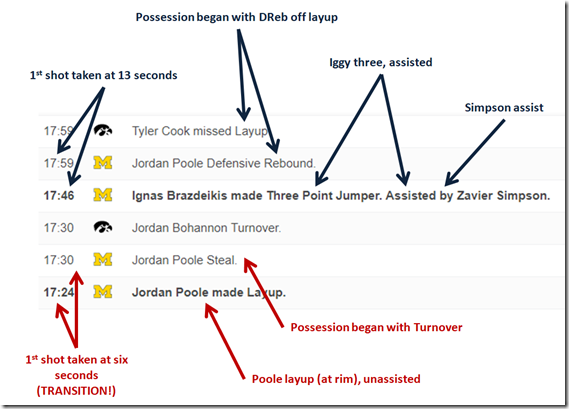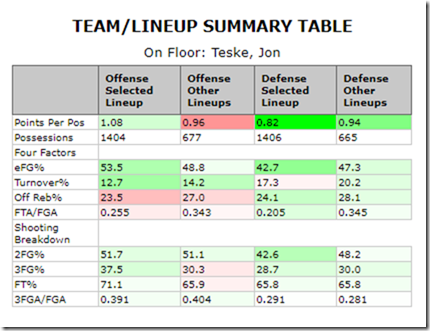
Seth's 2019 Bracket Assist Tool

As is tradition around here I like to put together a bracket widget and suggest some resources to use. This time someone stepped up to sponsor it. That would be Draftkings, who also offered their site for a place to enter your online brackets, given how much I complained about where we've been doing it. The link: https://www.draftkings.com/gateway?s=673740228 The 612x612 box with the the link:
I presume you know how a bracket works. It locks out at tipoff on March 21st, so get on that. Also presume you know it's for 21+. Eligibility restrictions apply. See website for details.
As for how to fill it out, the internet has some resources, starting with…
1. Seth's Amazing Google Sheet 2000 of 2019!
I like just having all of a ton of information in comparable form when making my selections, so I make this little tool on Google Sheets that you can have too (clicking the link will give you your own copy so you don't mess up my master):
Most of the data are from Kenpom. Injuries start from DonBest's list, but I write the impact and do a search because he misses a lot. Distance factor was calculated by putting the schools' addresses into Google Maps (I have a tool).
--------------------------------------------
Favorite Online Tools
I don't recommend just my little comp tool. You should learn a thing or two about each team and think about their matchups. Take a team like Iowa: they play a lot of zone, their defense is bad because their center is atrocious at it, and they murder you with outside shooting. If they're playing a team that takes away the three and scores a ton in the post, you don't want Iowa.
1. KENPOM. The gold standard, somehow even more useful, but no longer a secret known only to bloggers and stat-heads. I don't know how this isn't a homepage on your phone already. Ken Pomeroy uses tempo-free stats to pare down to predictive efficiency metrics. It's great for sweeping generalities, but doesn't account for situations teams find themselves in, for example it doesn't know the difference between Duke with or without the #1 pick. For that you can turn to…
2. BART TORVIK. Let's peel off whatever we want to from the Kenpom stats and see how that changes things. Then let's make a graph out of it. Torvik's site is for the real nerds, but he's got loads of pages that simplify bracket questions like "What's this coach's recent tourney results versus expectations?" Another other extremely useful bracket tool on Torvik is "Similar Resumes." Last I like his Team Bubbles Chart, which I can play around. For example try just High Major teams versus Quad 1 opponents (wish the bubbles could represent # of games charted but Torvik Wish Lists are part of the Torvik experience. If all this sounds like too much math and you just want someone who can summarize this easily, try…
3. THE POWER RANK. You know Ed Feng from the MGoBlog Roundtable on WTKA. This stuff is wheelhouse; in fact he literally wrote the book on it. Non-members are restricted to his standard "TPR" (the power rank) metric, which is based on team rankings, margin of victory, and strength of schedule, and spits out a predicted margin of victory over an average (read: ~160th) opponent). His turbo stat is based on how teams performed based on their Vegas odds, which is great because those take into account EVERYTHING—like who was not full-go that night. To entice signups he often leaks some of the more interesting predictions this spits out so he's a good tourney time follow. If I was a better friend I'd be on his site more often, but honestly I spend a lot more time on…
4. HOOP-MATH. The owner is Jeff Haley, the Seth of Burnt Orange Nation (the Longhorns blog), and his stats are produced from play-by-play data. I know because he's slow to update the data so I usually have to update opponent pages myself to include the last game. Here's how he gets his stuff:
Some find/replace and formulas converts that to a spreadsheet:
This is how I get my "At the Rim" and "Percent of Points Assisted" stats that you see on my charts. Or at least, this is where I get the raw data to produce those. Brian is on Hoop-Math every preview so he can tell you things like "this team gets half their shots from transition and triples their eFG% so shutting that down is a priority."
It's a great site for finding hidden upsets, especially for subscribers, who can download the data and get access to additional boxes like late offense and individual shot blocking at the rim versus at large. Are they a transition-reliant team facing an opponent that doesn't turn it over? Are they a mid-major with a big taking a ton of unassisted shots at the rim facing an elite defensive center? How bad are they when their banged up SG gets in…waitaminute, now I'm getting them confused with the similar layout of:
5. HOOP-LENS. This is a paid (not expensive) service for breaking down individual players, and well worth your while for the fun to be had from turning your work's instant messaging channel into a wall of splits:
There's no better way to quickly find who's a defensive presence, though you have to look at the 3FG% for a non-3PA defender to make sure you're not just looking at a small sample size that happened to catch a hot shooting streak on one side. His PAM (points above median) page is my first stop to see who's a Guy or a Dude, and also to quickly visualize who's doing what for a team's shooting efficiency:
Again, however, you need to contextualize this with usage data and assist data. For that you can go back to Kenpom, or try…
6. SPORTS-REFERENCE.COM, whose Usage metric is almost the same as Pomeroy's (the biggest difference is they rate a free throw as 43.5% of a possession vs. Kenpom's 47.5%), and far more accessible for spreadsheeting purposes. Best known for baseball-reference, these statistical aggregators used the same scripts to build a database for college basketball and all the other major sports.
Because it's so automated there are mistakes that pop up, so don't use them for deep historical aggregates (e.g. Tom Izzo's career wins). Also their attempts at building their own statistics are almost always disasters—these are coders, not mathematicians, and their general understanding of the data they collect is about on par with that of your average basketball announcer (likewise their understanding of their own level of understanding). Exception: I like how they visualize a season that you can mouseover for context.
But you don't care about that, because their usefulness for raw stats is up there with having your average basketball announcer on speed dial, i.e. unparalleled. Try to focus more on your vast appreciation for what they provide, and less on how funny it is that in 2019 you still have to scroll past per-game to get to the raw and tempo-free numbers.
Of course if you're not into stats and scrolling, and just want to not be dumb about the plotlines you missed by not following college basketball beyond what Michigan did and the relentless proliferation of Zion Williamson news, catch up with…
7. ESPN's BASKETBALL STAFF. Somehow John Gasaway and Joe Lunardi (and TomVH) managed to survive The Worldwide Leader's recent staff slimdown to a bare handful of loud, vastly overpaid morons and SEC slappies. Even after the field is picked, Bubble Watch stories will familiarize you with the recent goings on for the hardest picks. Gasaway is the Dude in college basketball—all the context you're trying to parse out of stats and waterfall graphs above is already embedded in his brain, along with years of basketball watching to put that in context.
Just make sure you've got some strong anti-autoplay apps running on your browser. Or you could eschew the guys everybody reads for some familiar Twitter faces of…
8. BIG TEN GEEKS: A group of Big Ten fans who like to play with stats—@CT_In_TC is the Michigan fan there and also the keeper of the blog-beloved stat PORPAGATU, ie points over replacement per adjusted game at that usage. It's the closest thing to baseball's WAR in college basketball. Of course, if you've got $15 to spare and really want to geek out…
9. HOOP VISION'S 2019 TOURNAMENT BIBLE: This is Jordan Sperber and Rafi Goldman's scouting information on every team in the tournament and invaluable to our coverage. Jordan and Rafi were D-I video coordinators so this is exactly the kind of reports coaches get. In fact it's really made for the coaches. But you coach from the sideline, right?
THANKS SETH!
March 24th, 2019 at 11:55 AM ^
Found this too late for doing better with my brackets but fun to see the matchups now that they are real for Sweet 16 and better predicted for Elite 8. Cannot wait for another M-MSU matchup where M plays with its brain and brawn for a full 40 minutes, even though the tool favors MSU by 2 or so. This is fabulous! Thank you, Seth!!!
So will this work as a retirement plan?
... asking for a friend
Is anyone else having issues when selecting Michigan/Michigan St or Florida/Florida St in the tool? When I select Michigan from the list it selects michigan st and florida selects florida st.
I couldn't recreate this issue. Try down arrow?
Okay I managed to make this happen on mobile (chrome browser). Working on it now.
Okay so it was an alphabetical thing! Excelsior! You'll have to download it again.
Nice, thanks Seth! The list was being sorted by region or something.
Good lord this is thorough. Thank you Seth
Dangit. Now I gotta do picks over
Mynd you, moose bites kan be pretti nasti...
Thanks for the Python, Monty references. From the movie or the book?
This is just fantastic. Thanks again Seth
Seth, amazing tool. Thanks.
I didn't see Ole Miss (who plays Oklahoma in the first round). ???
"Mississippi"
Argh, I just saw that it's Miss.
Seth, can you confirm if the T-Ranks are accurate? I found Maryland and Mississippi St's ranks don't make sense so far.
The rest is amazing, thanks for all the tools!
whoa. Looking into it.
Fixed. Re-download it. What happened was a little sorting error due to an invisible <tab> after the names of the teams on Torvik. When you sort with the tab after, e.g. "Florida " that will sort below a "Florida Intl" or "Florida St." because <tab> is after <space>. Should have error checked; caught it when I did.
March 18th, 2019 at 10:22 PM ^
You da man, thanks for fixing it so fast!
March 18th, 2019 at 10:07 PM ^
Texas Tech in the Elite 8 but UM winning it all?
March 18th, 2019 at 10:51 PM ^
Texas Tech
Texas Tech for Now
Tah Tah, Texas Tech
March 18th, 2019 at 10:17 PM ^
Thanks as always Seth!
When will the one for the Women's bracket be posted?
March 18th, 2019 at 10:22 PM ^
This is amazing Seth! Thank you!
March 18th, 2019 at 10:59 PM ^
has anyone seen any hidden upsets using the tool ?
More like I've seen reasons to not pick the upsets I liked originally. For example Nova and Cincy are both playing within driving distance of their schools.
Fantastic work - thank you Seth!
Thanks much, Seth! My surest prediction is that I am going to waste a lot of time at work today.
March 19th, 2019 at 10:07 AM ^
this is on par to the beautiful paintings people make on excel.
didn't know it was possible but damn it's beautiful.
March 19th, 2019 at 10:56 AM ^
This is glorious. Four hours from now when I pop out of the rabbit hole, I'm gonna need a sandwich.
March 19th, 2019 at 11:48 AM ^
Trying to discern Seth’s picks on his bracket leads me to believe Twitter has broken his mind.
Thank you Seth!
Seth, how is the predicted winner calculated? A combination of all this research?
Thank you Seth [clap clap clapclapclap]
Logged on to praise Seth







Comments